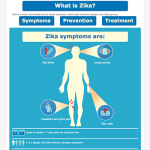Revisiting Behaviors that Can Prevent Maternal and Child Mortality

A mother and her infant in Somaliland, Somalia. ©2014 What Took You So Long for Medical Aid Films, Courtesy of Photoshare
Tremendous strides have been made in the past several decades in saving the lives of mothers and children. The numbers of those dying has decreased dramatically, thanks to the tireless efforts of governments, international organizations, communities, and individual households.
Yet, with all of this progress, the numbers are still unacceptably high.
In 2015:
- 5.9 million children under age five died, that is 16,000 every day;
- 303,000 women died during and following pregnancy and childbirth – 830 every day.
Thus efforts to stop these deaths continue unabated. In 2012 there was a worldwide meeting, the Child Survival Call to Action, which set a goal date of 2035 for reaching fewer than 20 deaths per thousand live births in all countries.
In 2014, at the second year anniversary of the 2012 meeting, USAID identified ten key “accelerator behaviors” which if taken could substantially contribute to ending preventable deaths:
- Diarrhea
- Water, Sanitation & Hygiene
- Healthy Timing & Spacing of Pregnancies
- Nutrition
- Immunizations
- Malaria
- Pneumonia
- Prevention of Mother-to-Child Transmission
- Maternal
- Newborn
Accelerator behaviors are a priority for programming because they have the highest potential to hasten the decline of child and maternal deaths.
The ten behaviors were selected over others that contribute to ending preventable deaths because they have low uptake (e.g. low use of oral re-hydration salts), yet impact a major cause of child and/or maternal mortality across the continuum of care/lifecycle (e.g. iron tablet consumption during pregnancy, postnatal care-seeking).
There are also “related behaviors” which accompany each accelerator behavior. A related behavior contributes to improving the enabling environment to effectively carry out the accelerator behavior. A full chart of accelerator and related behaviors is available here.
Each of these behaviors impact a major cause of child and/or maternal mortality across the continuum of care/lifecycle yet currently have low uptake in many countries. Accelerator behaviors are thus priority behaviors for programming as they have the highest potential to hasten the decline of child and maternal death worldwide.








Leave a Reply
Want to join the discussion?Feel free to contribute!